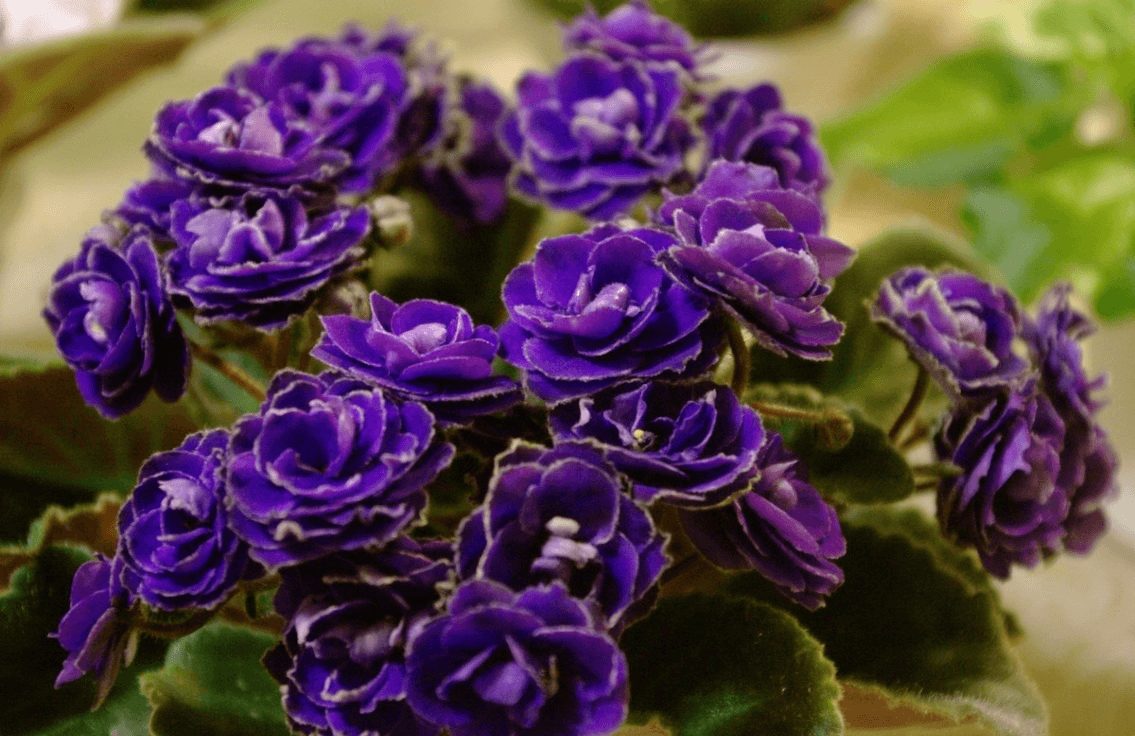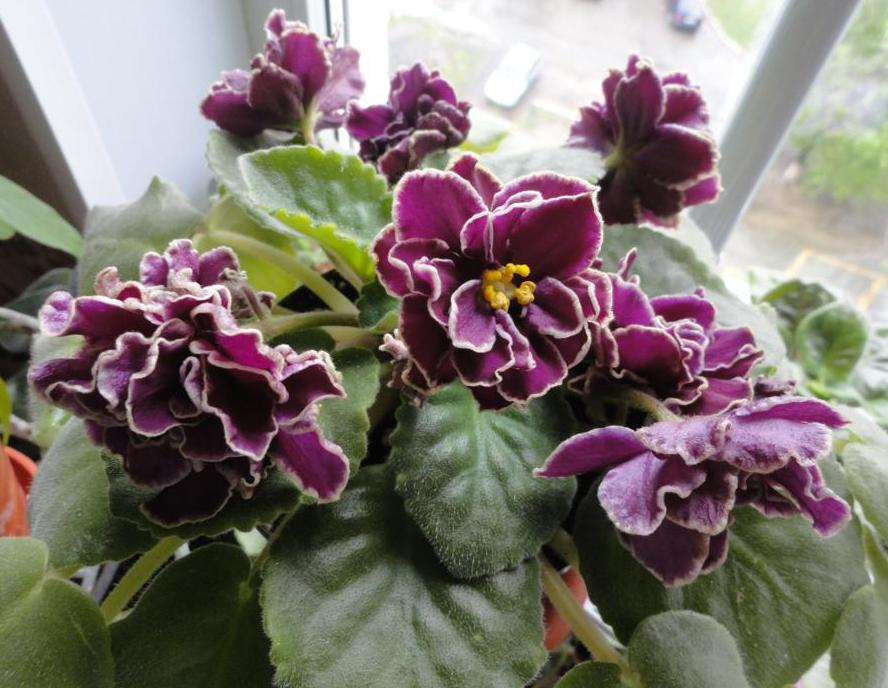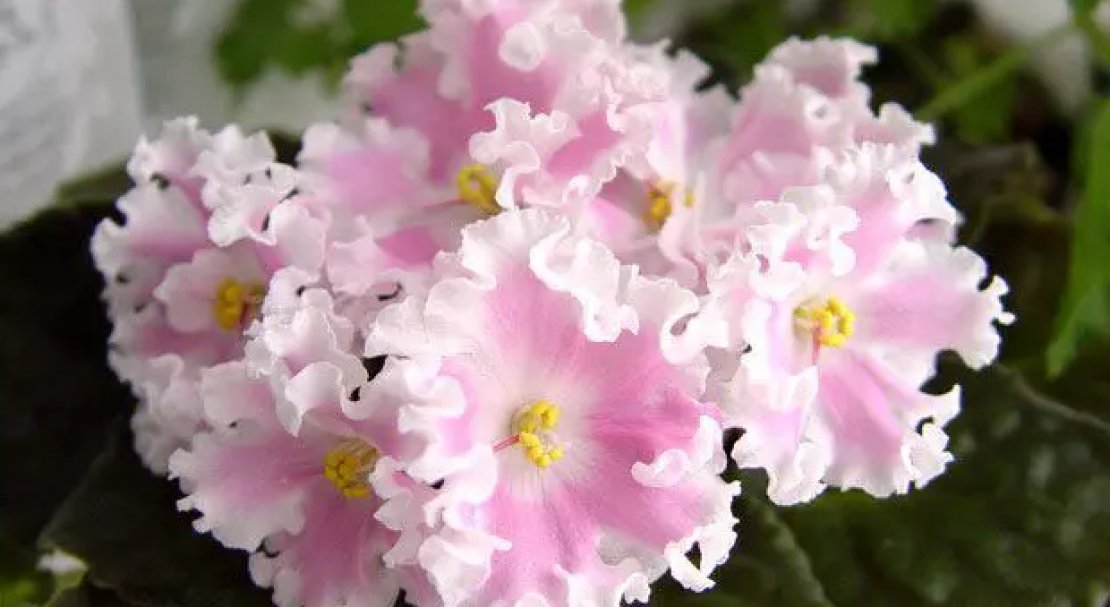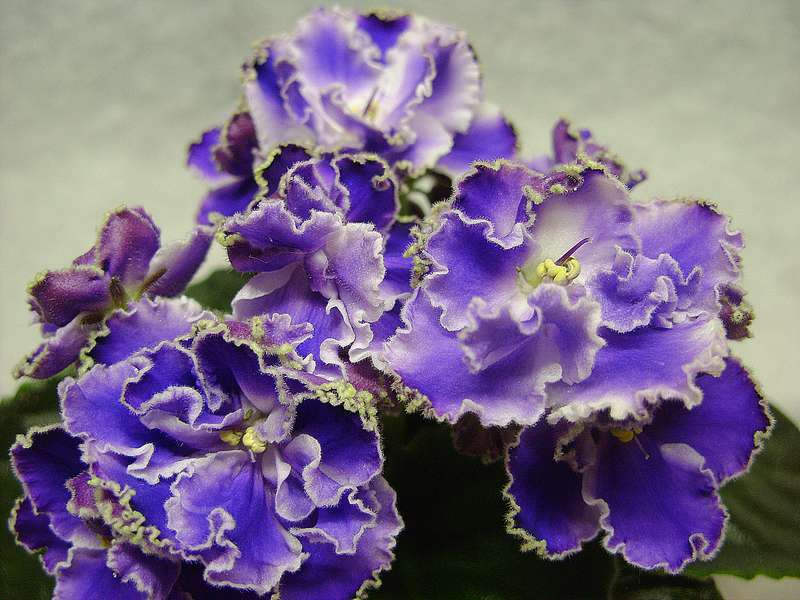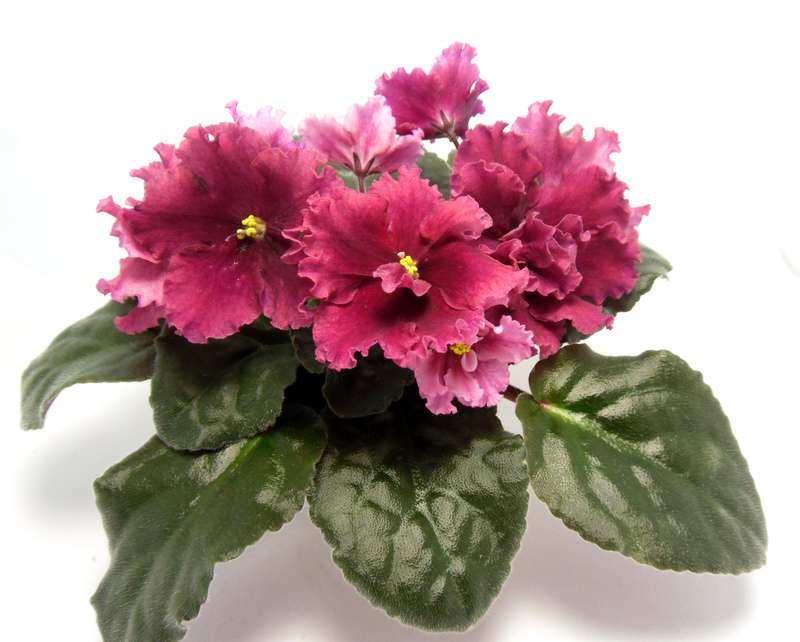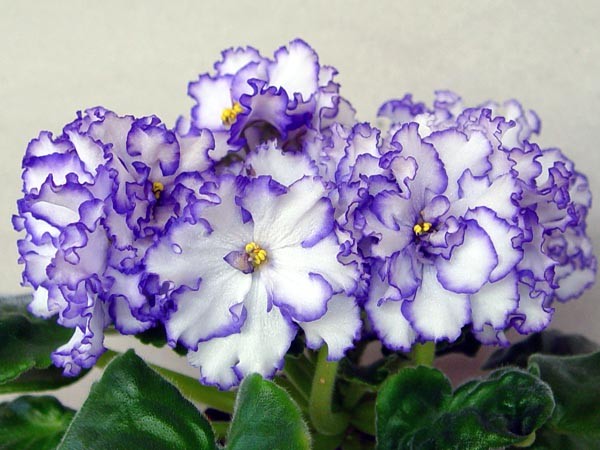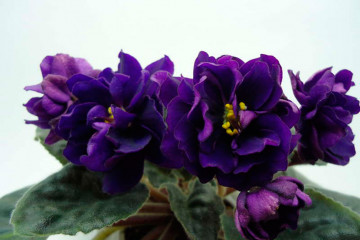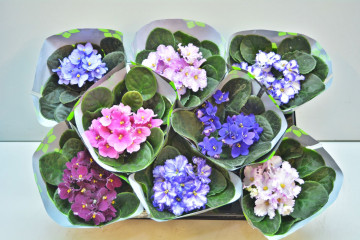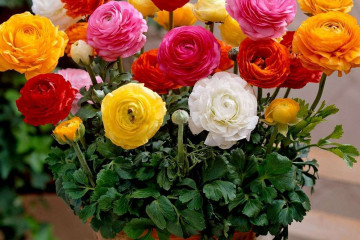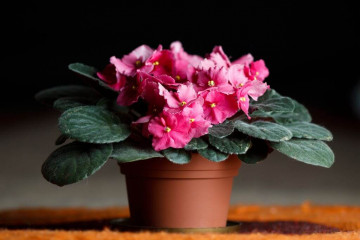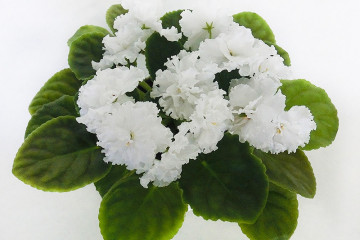Violet winter rose - unusual violets that look like roses
Content:
Modern varieties of room saintpaulia are over 500 varieties. Their number, thanks to the painstaking work of breeders, is constantly increasing. Violet Winter Rose is a novelty on the domestic market, impressive with its lush bloom of a rich blue-violet hue with a lilac border.
What does a violet Winter Rose look like, which family does it belong to?
Flowers of this variety differ from the usual ones, they look more like small roses. Many petals, similar to a cloud of an evening deep blue color, gradually open like a pink bud, darker on the front side, and much lighter on the inside. Peduncles - branching, numerous. As a result, the compact crown looks extremely elegant. The leaves of this variety are smaller than those of the usual Uzambara Saintpaulia, have a light green border along the jagged edge, and from the inside out, they are much lighter with red-burgundy veins.
Violets that look like roses: varieties
The popularity of violet varieties, whose flowers are more luxuriant than usual with numerous double petals, is only growing. Large-flowered Saintpaulias are varieties with a corolla diameter exceeding 7 cm. Among the most spectacular new products that have managed to go on wide sale, it is worth noting:
Magic of Love - unusual violets with dense double flowers of a beetroot-red hue with a white border along the edge of the petals. The leaf is large emerald green. Peduncles bear 2 buds.
Marshmallow - a variety bred by the breeder Morev K.L. Cup-shaped large star-shaped flower with double petals. The light pink shade is the main shade with darker pink spots in the center, as the bud finally opens, it becomes more and more saturated. The leaf is light green, evenly colored, slightly gathered along the edge, like ruffles.
Ming Dynasty - bred by I. Fredette. Its cupped pink flowers have a highly corrugated petal edge. Almost white in the center to the edges acquire a pale pink tone. The sheet is also corrugated and combines several shades of green in the form of specks and spots.
Yesenia (Le Esenia) - a variety bred by the Vinnitsa breeder Elena Lebetskaya. Large purple-white terry corollas up to 5 cm in diameter can bloom at the same time in an amount of up to 40 pieces.
TZ-Sunset - violet K. Morev. A pink-red large semi-double flower with a darker core. On peduncles 1-2 buds. The leaf is large, shiny with a slightly serrated edge.
Briefly about the history of the emergence of new varieties
In Russia, Ukraine, Belarus, European countries, the USA, there are many nurseries, as well as private breeders, whose specialization is varietal violets. It happens that the same trade name may belong to externally dissimilar plants in description. Therefore, it is not surprising that under the name Winter Rose, you can see completely different flowers in various catalogs. For example, Elena Korshunova, a well-known breeder in Togliatti, has registered her variety "Winter Rose".
The prefixes to the name indicate which nursery or breeder was able to obtain the given flower for the first time.So, RM - an indication of the breeder Natalia Skornyakova, ND - Natalia Danilova-Suvorova, 23 - Yana Zubo, etc.
The process of introducing new products is very exciting, although not fast. There is no guarantee of success, but there is always a chance to grow varieties with unique characteristics.
Crossing requires two mature plants in the flowering stage. The pollen ripens 5 days after the bud opens. It is carefully transferred to the pistil of the crossed flower. If pollination is successful, then a seed box is formed from the wilted corolla. They are so small that they look like dust. They ripen within 6 months. The dried peduncle with a box is cut off, the seeds are carefully opened and dried for another 3 weeks. Then sowing is carried out. Seed germination lasts only 6 months. This is how rare violets are obtained, as well as varieties of violets with the largest flowers.
Leafy cuttings of common Saintpaulias will produce plants that are 100% identical to their mothers. But not the chimera varieties. They do not reproduce by foliage while preserving their maternal traits, new violets will expel buds of unpredictable color.
Features of caring for a violet Winter Rose at home
In general, the rules of care do not differ fundamentally from other saintpaulias. This makes the variety a desirable acquisition for any grower who has experience in growing violets.
Temperature
The ideal temperature regime for most varieties of indoor violets is in the range of + 22-24 ° С. They will suffer a decline and a rise of a couple of degrees without loss. But cooling below +15 ° С, as well as increasing to +30 ° С and more, can lead to the death of the flower.
Lighting
Light is needed bright and diffused. The pot can be placed on the south window if a taller plant is placed next to it, creating a shadow. Eastern and western windowsills are much more suitable, where there is a bright light only in the morning or in the afternoon.
Watering
It is best to water through the pallet. Young bushes need it more often, since the volume of the pot is smaller. It is even better to lower the container into the water 1/3 of the height from below until wet spots appear on the surface of the soil, and then remove it and put it on a dry pallet.
Spraying
It is categorically contraindicated for drops and splashes of water to hit the petals and leaves. But it is useful to humidify the air around. To do this, a pot with a pallet is placed on a wider pallet filled with small pebbles immersed in water.
Humidity
Violets love damp air, so hot and dry leaves and flowers dry out. If the humidity in the room is below 60%, you will have to create an artificial microclimate around the flower pot, for example, by placing it in an aquarium or greenhouse.
Priming
The soil mixture for transplanting is prepared from leafy earth with the addition of sand, humus, pieces of charcoal, coconut fiber, peat. If you add moss, it will only improve the composition of the soil, as well as agroperlite or vermiculite for looseness. Optimal acidity pH = 5.5-6.5. Drainage from coal or small pebbles is placed on the bottom.
Top dressing
To bloom, violets require phosphorus and potassium. Nitrogen is introduced only at the stage of active development of a young plant before the first flowering. Periodically, it is useful to water the flower with water with the addition of a couple of drops of iodine, or a slightly pink solution of potassium permanganate.
When and how it blooms
If the care of the plant is correct, then the buds will appear regularly as the old flower stalks wither. If there is no goal to get seeds, then the wilted flowers, along with the legs, are carefully removed immediately after wilting.
Types of flowers
Violets can have corollas with divided and fused petals, the edges of which are even, serrated, terry. The color is monochromatic, multi-colored, with specks, contrasting border.
Flower shapes
Hybrids with flowers resembling rosebuds are very popular. In addition, there are other forms:
- bell (bell);
- cup-shaped (bowl);
- "Wasp" - with protruding long tips (wasp);
- "Pansy" (pansy);
- "Star" (star);
- scallop;
- terry and semi-double;
- simple (5 fused petals).
Flowering period
On average, homemade Saintpaulias bloom for 8 months a year. The period may be different, depending on the variety, illumination, plant age. More often it covers the warm season, but nothing prevents the violet from blooming in winter, if all the necessary conditions have been created for this.
Compared to many other flowering indoor plants, Saintpaulia Winter Rose is very unpretentious. The opportunity to admire its unusually large and bright flowers all year round pays for the collector's efforts to find it in stores where this beautiful variety can be found more and more often.
